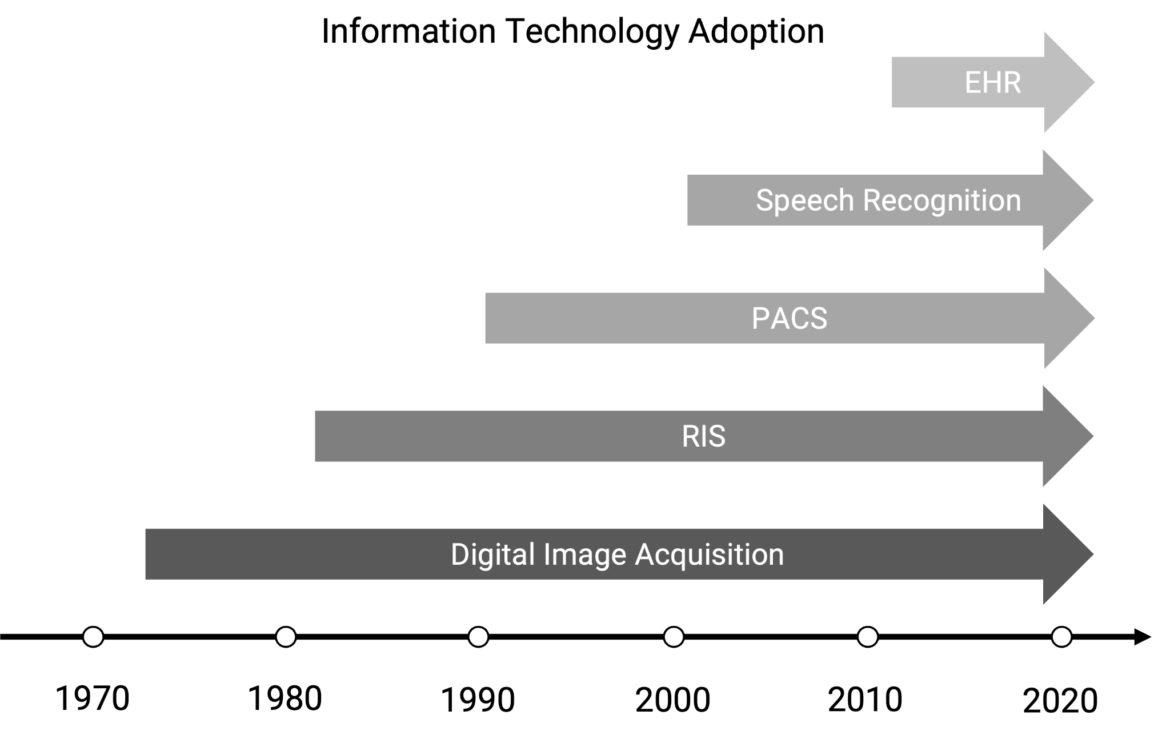The modern rad could be forgiven for being suspicious of the promises of new technology. For the most part, technology has served as an enabler for a higher volume of work with little regard for how rads are supposed to manage it. Key components of the rad IT stack have generally evolved independently of each other leading to loosely federated interoperability at best, a harried experience at worst. But there is now a great opportunity to modernize the architecture in order to streamline the disparate components and thus improve rad workflow.
The rad IT stack: a house of cards?
Distinct development periods, an assortment of communications standards, and fragmentation of the radiology IT industry has led to an inefficient structure with sparse integration between the fundamental components.

The situation rads face today can be partly explained by an industry-wide feature creep—an evolutionary path that made sense at each phase of development, but which has ultimately led rads on their own evolutionary path towards frustration and burnout. New components in the marketplace have not been integrated within pre-existing components, but instead, loosely interoperate along decoupled workflows. Hence, a sub-optimal user experience has evolved over time and persists today.
Imitation vs. innovation
Other factors have influenced the evolutionary path of rad IT. Regulatory agencies protect public health by ensuring the safety and efficacy of medical products and devices; however, unintended consequences may arise at times. Medical device developers have a well-defined route to market for certain devices that are deemed to have “the same intended use and technological characteristics” as those already on the market; however, this incentivizes imitation of existing products over innovation of new technologies.
Another incentive for imitation over innovation comes from communications standards (DICOM, HL7, etc) between the components of the rad IT stack. They have paradoxically enabled tremendous advancement in technology but also hinder further advancement beyond the federated architecture they were designed for. Interfaces of current standards define, but also limit, the roles and functions of each layer. Conformance and interoperability come at the expense of innovations in workflow.
Reconstructed rad IT: a paradigm shift
Thomas Kuhn famously described the paradigm shift resulting from scientific revolutions where normal science is increasingly unable to describe anomalous observations, leading to a punctuated adoption of a new theory or framework. While the field becomes aware of accumulating contradictory evidence, the revolution is usually visible only in retrospect.
For rad IT, the anomalies are accumulating in plain sight. Few if any rads find today’s juggling of multiple IT apps an optimal experience that induces flow state. Healthcare IT is disproportionately represented in radiology due to the enormous complexity of interoperability. Many of the underlying architectural designs are decades old despite cloud computing having revolutionized so many other industries. The new paradigm of reconstructed rad IT is embodied by RadOS. It is happening presently and asks us to rethink the architectural fundamentals. Maintaining interoperability across a fragmented rad IT stack is a quadratically hard problem. Reconstruction of the rad IT stack not only subdues that problem but also enables the delivery of intersectional value between viewer, dictation, worklist, order entry, etc. This is where the technology can start delivering on its promises.
The revolution will be televised… or at least blogged. Stay tuned.

